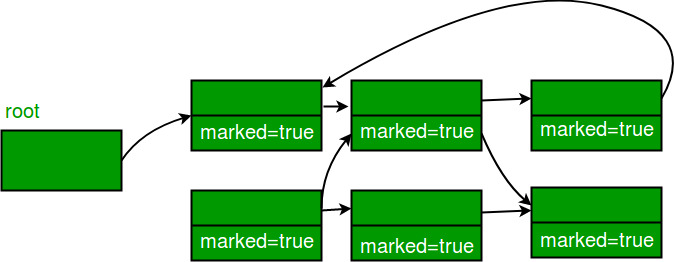

One difference is that G1 is a compacting collector. Comparing G1 with CMS reveals differences that make G1 a better solution. G1 is planned as the long-term replacement for the Concurrent Mark-Sweep Collector (CMS). The application is experiencing undesired long garbage collection or compaction pauses (longer than 0.5 to 1 second). The rate of object allocation rate or promotion varies significantly. More than 50% of the Java heap is occupied with live data. This means heap sizes of around 6 GB or larger, and a stable and predictable pause time below 0.5 seconds.Īpplications running today with either the CMS or the with parallel compaction would benefit from switching to G1 if the application has one or more of the following traits. The first focus of G1 is to provide a solution for users running applications that require large heaps with limited GC latency. Thus, the collector has a reasonably accurate model of the cost of collecting the regions, and it uses this model to determine which and how many regions to collect while staying within the pause time target. Based on data from previous collections, G1 estimates how many regions can be collected within the target time. It meets the set pause time target with high probability but not absolute certainty. It is important to note that G1 is not a real-time collector. Parallel compaction performs only whole-heap compaction, which results in considerable pause times. CMS (Concurrent Mark Sweep) garbage collection does not do compaction. This is beyond the capability of both of the previous methods. Thus, with each garbage collection, G1 continuously works to reduce fragmentation. This evacuation is performed in parallel on multiprocessors to decrease pause times and increase throughput. G1 copies objects from one or more regions of the heap to a single region on the heap, and in the process both compacts and frees up memory. G1 uses a pause prediction model to meet a user-defined pause time target and selects the number of regions to collect based on the specified pause time target.
#Garbage collectors in jdk 6 full#
As the name suggests, G1 concentrates its collection and compaction activity on the areas of the heap that are likely to be full of reclaimable objects, that is, garbage. This is why this method of garbage collection is called Garbage-First.

#Garbage collectors in jdk 6 free#
It collects these regions first, which often yields a large amount of free space. After the marking phase completes, G1 knows which regions are mostly empty. G1 performs a concurrent global marking phase to determine the liveness of objects throughout the heap. The heap is partitioned into a set of equally sized heap regions, each a contiguous range of virtual memory. The G1 collector achieves high performance and pause time goals through several techniques. This prevents interruptions proportional to heap or live-data size. Whole-heap operations, such as global marking, are performed concurrently with the application threads. It attempts to meet garbage collection (GC) pause time goals with high probability while achieving high throughput. The Garbage-First (G1) garbage collector is a server-style garbage collector, targeted for multiprocessor machines with large memories. Java Platform, Standard Edition HotSpot Virtual Machine Garbage Collection Tuning Guide


 0 kommentar(er)
0 kommentar(er)
